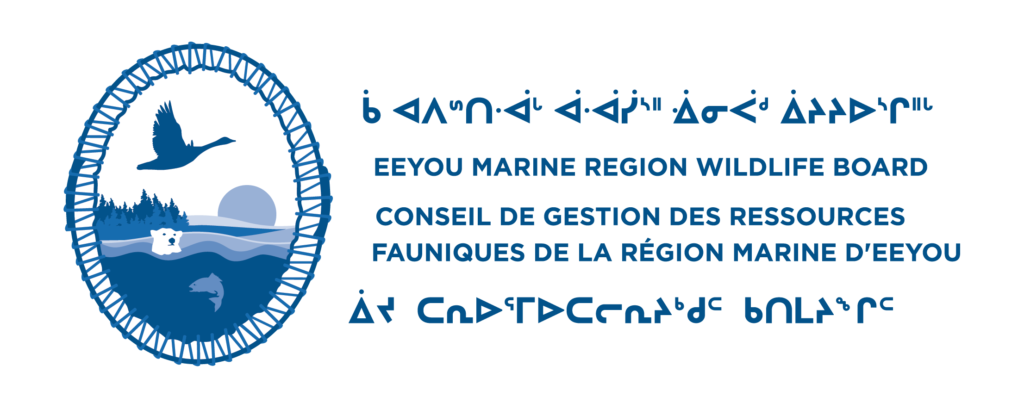Research Priorities
The EMRWB is responsible for identifying research requirements and deficiencies important to wildlife management and promoting and encouraging on an ongoing basis, research aimed at meeting these requirements. As such, the Wildlife Board has undertaken stakeholder engagement and several consultation sessions to understand community perspectives on wildlife research priorities.
The EMRWB has defined “research” as:
“studies and works designed to advance scientific and traditional knowledge related to wildlife, its habitat, the factors affecting wildlife and habitat, as well as the harvesting activities in the coastal and offshore areas of the EMR.”


As a first step, a Symposium on Sciences and Traditional Knowledge was held with academic and scientific stakeholders in March 2014.
The EMRWB then conducted consultations in each of the coastal communities:
- Waskaganish – May 2016
- Whapmagoostui – November 2016
- Wemindji – March 2017
- Eastmain -June 2018
- Chisasibi – September 2018
During the consultation sessions, community members were asked to identify their priorities related to wildlife research in the marine region. Below is a table summarizing the key research priorities raised during the community sessions. Click here to read the full report.

| Research Priority | Research Priority Description | Communities |
|---|---|---|
| Berries | Research to identify the reasons for the reduced presence of berries on islands in the marine region and how these changes are related to changes in wildlife populations. | Eastmain,
Wemindji, Chisasibi |
| Commercial Fishing, Aquaculture or Shellfish Harvesting | Studies to identify the numbers and types of fish and shellfish that exist in the marine region. Evaluation of the opportunities for commercial harvesting. | Waskaganish,
Eastmain, Wemindji, Chisasibi |
| Development Impacts | Studies to document the impacts of developments such as hydroelectric developments, mining, cabin construction and sports harvesting on wildlife and their habitat. Studies to track how contaminants such as mercury may be impacting the health of animals and including:
|
Waskaganish,
Eastmain, Wemindji, Chisasibi, Whapmagoostui |
| Fish | Study the causes of changes to the size, numbers, and taste of fish in the region including Arctic char, capelin, cisco, sturgeon, whitefish, trout, and sardines. Studies on fish habitat and migration routes. Monitor annual fish harvest levels. Establish monitoring program for environmental pollutant levels in fish | Waskaganish,
Eastmain, Wemindji, Chisasibi, Whapmagoostui |
| Terrestrial Mammals | Studies on changes to the populations and distribution of large mammals including studies on polar bear, moose, deer, and caribou. | Waskaganish,
Wemindji, Chisasibi, Whapmagoostui |
| Marine Mammals | Studies to understand changes to the populations and distribution of marine mammals including beluga whale, orca, walrus, seal and polar bear. Resources to deal with increasing encounters with polar bears in camps. | Waskaganish,
Wemindji, Whapmagoostui |
| New Species | Research into increased populations of new animal species and plant life in the area and the impacts of these non-native species on the animals that Eeyou people harvest such as fish and waterfowl. | Waskaganish,
Eastmain, Wemindji, Chisasibi, Whapmagoostui |
| Water | Research into changes in water levels and quality and the impacts of these changes on animals and animal habitat in the marine region. | Waskaganish,
Eastmain, Wemindji, Chisasibi, Whapmagoostui |
| Waterfowl | Study changes to waterfowl populations, health, and distribution in the marine region. | Waskaganish,
Eastmain, Wemindji, Chisasibi, Whapmagoostui |
| Waterfowl Habitat | Studies to understand changes to waterfowl habitat including reductions in eelgrass and increased woody vegetation growth along shorelines. Studies to identify ways to re-establish eelgrass or enhance other waterfowl habitat. | Waskaganish,
Eastmain, Wemindji, Chisasibi |
